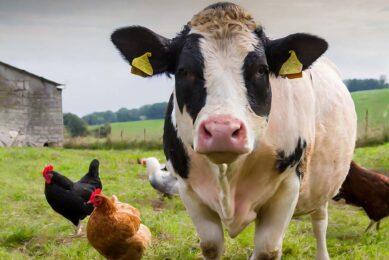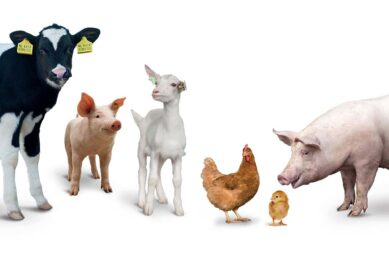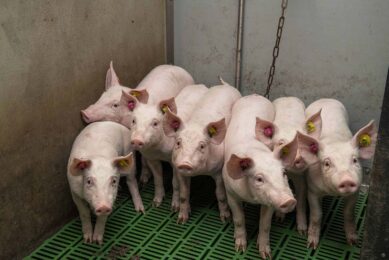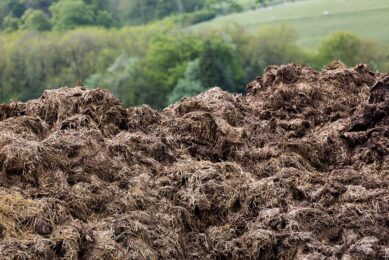Antimicrobial resistance and its practical prevention
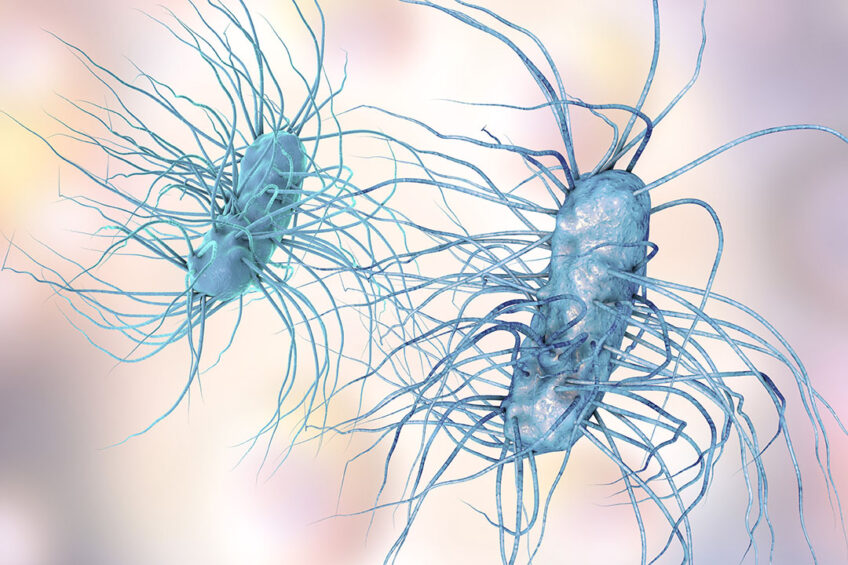
A topic that continues to be of interest to livestock veterinarians, producers and consumers is antibiotic resistance. Antimicrobial resistance to treatment options impacts animal welfare, food security and even human health.
Many organisations such as the US Center for Disease Control and Prevention consider this issue to be a global public health concern. This is especially relevant to the livestock industry as misuse of antibiotics beyond their intended purposes can contribute to AMR increases.
Causes of AMR
Paige Gott, senior ruminant technical manager for Biomin America, explains that antimicrobial resistance occurs when microorganisms, like bacteria, are no longer affected by antimicrobial substances that previously worked to inhibit their growth or killed them entirely.
“Food animal agriculture has been suggested as a potential contributor in the development and spread of AMR for a few reasons,” she explains, “including historic use of low-dose antibiotics for production purposes (e.g., growth promotion and improved feed efficiency) and the potential spread of AMR bugs to humans via the food chain.”
Various organisations all over the world have established regulations that allow them to oversee and control the use of different antimicrobial treatments in animals to decrease the risk of AMR. Some of this is due to the concern raised by consumers and other segments of the food supply change on this issue.
Fortunately, proper measures of prevention in the areas of nutrition and overall management can greatly help reduce the need for any antibiotic treatment in the first place. It all starts with promoting herd health and natural immunity.
…proper nutrition plays a role in animal health for a variety of reasons.
Nutrition and prevention
One of the most critical factors of health and disease prevention is overall nutrition.
“The majority of the immune system resides within the gastrointestinal tract,” says Gott, “so proper nutrition plays a role in animal health for a variety of reasons.”
A proper diet for adequate intake is a cornerstone in maintaining an optimal energy balance – especially important in the case of lactating dairy cattle and other animals performing at high energy levels – as well as being a way to support production and promote health.
Besides the main vitamins and minerals, Vitamins E and D, Gott notes, along with selenium, copper and zinc are incredibly important for immune function.
“Additional nutrients including certain fatty acids are being investigated for the roles they play beyond serving as a source of energy,” she adds.
“Nutraceuticals is one common term used for such products that are considered as alternatives to traditional antimicrobials,” says Gott. “Some of the categories of feed additives which are reported to have potential health and/or performance benefits include phytogenics (ingredients of plant origin including herbs and spices, extracts, and essential oils) as well as yeast-based products (e.g., yeast culture, yeast cell wall including mannan-oligosaccharides (MOS) and beta-glucans) and other direct-fed microbials (i.e., probiotics).”
Phytogenic feed additives, or PFAs, have a lot of variation in their formulations and concentration of active ingredients. Gott says that these range from being simple (made with one source) or compound (multiple sources) to be very complex with lots of blends.
These have a wide range of benefits including feed intake promotion and enhancing palatability by adding in more pleasant flavours and scents. Additionally, they can also have other more biological-based properties that promote health by being anti-inflammatory, an antioxidant and even antimicrobial like antibiotics.
“It’s a complex topic,” says Gott, “but there is a lot of ongoing research to identify what benefits these types of products can have in cattle.”
By limiting mycotoxin exposure, the use of antibiotics may be reduced.
Negative impact on health and productivity
Diet can also impact health by having anti-nutritional factors at play. For example, mycotoxins present in contaminated feed or ingredients can hamper immune function and impair health. They can also decrease productivity. With this in mind, Gott recommends always carefully monitoring feeds for contamination and assessing risk. Some non-specific signs of mycotoxin contamination include reduced feed intake, diarrhoea and impaired production.
“These clinical signs may lead to more antimicrobial usage, but animals will not respond well to treatment if mycotoxins are the cause of the problems,” she continues. “By limiting mycotoxin exposure, the use of antibiotics may be reduced.”
Figure 1 – Combatting resistance with surveillance.
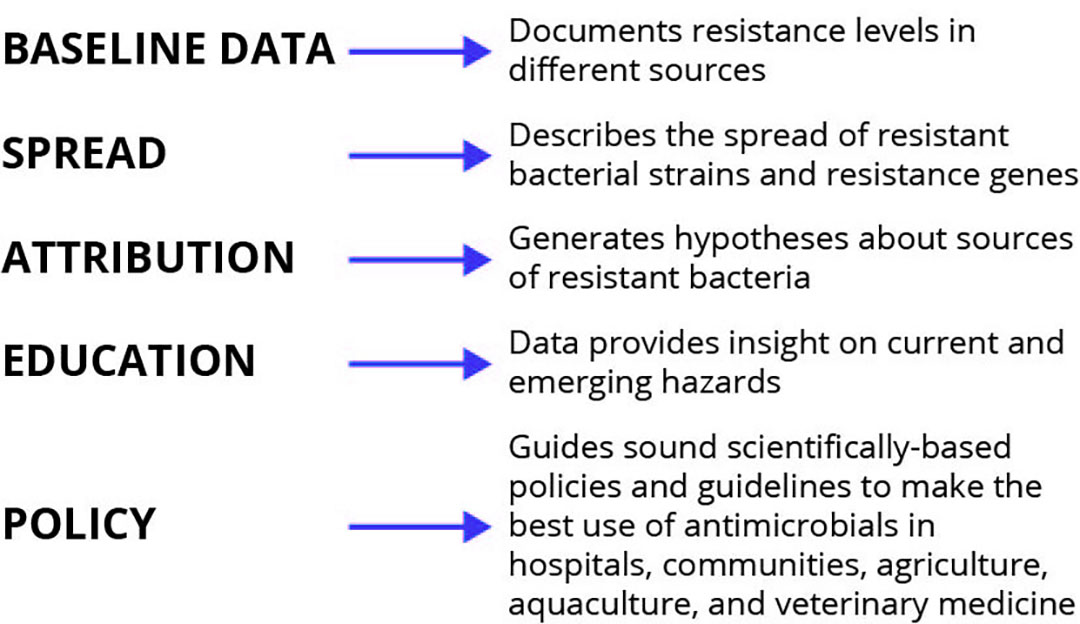
Management and appropriate treatment
A common issue with antibiotic usage is metaphylaxis treatment or group treatment of animals after a disease or infection has been found to reduce spread instead of implementing preventative strategies, according to Erin Schwandt a nutritionist and senior technical manager also with Biomin. “Nutrition, management and health collectively need to work together to reach optimal health and performance in cattle,” she says. “Ensure adequate feed intake, proper management (clean water, bedding, shelter, appropriate feed delivery, proper sorting, low-stress handling, rest on arrival, etc.), working with your vet to ensure appropriate vaccination, implant and deworming schedule in place.”
Going hand-in-hand with management is the proper treatment for animals who need it. In dairy cattle, Gott points out that antimicrobials are used for both mastitis treatment and dry cow therapy.
“Implementation of selective dry cow therapy (i.e., only treating certain cows which have been identified as eligible based on different health criteria) is an increasing topic of interest in the US,” she says. “The use of selective dry cow therapy is common in other regions of the world, including mandated practice in some parts of the EU.”
Of course, Gott adds that it is important to recall that there is no single product or management practice that can completely replace the need for antibiotic usage in livestock. Despite all the best management efforts and cutting-edge technology, illnesses can still happen and when they do should be addressed accordingly for animal welfare and food safety.



